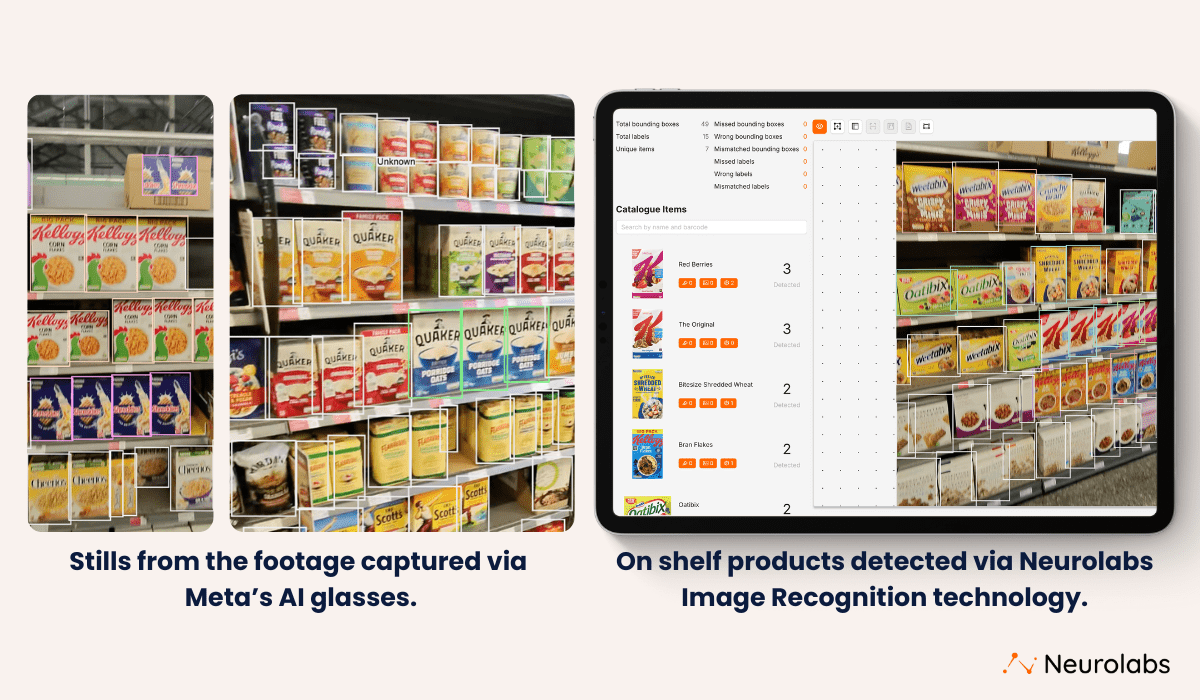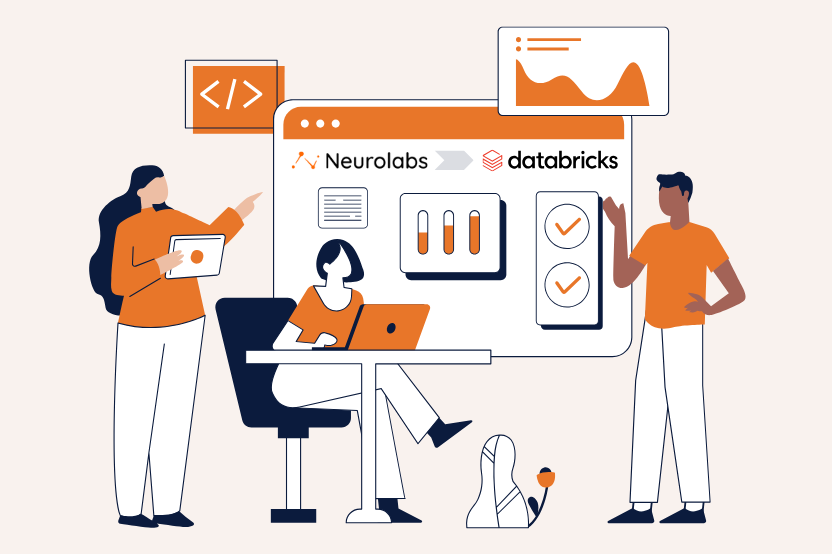Recently, I walked into a supermarket with a pair of Meta Ray-Ban smart glasses. I recorded a shaky, blurred video of a cereal aisle. Later, I pulled a few stills from the footage, no editing, no stabilisation and ran them through our image recognition engine at Neurolabs.
Every product was instantly recognised.
It wasn’t luck. It was proof of something bigger: image recognition in CPG has entered a new era.

From photos to intelligence (already here)
For years, image recognition was seen as a way to count SKUs in pictures. That’s no longer enough and it’s no longer the case.
Today, we can instantly tell not just what is on a shelf, but whether a promotion is live, a display is compliant and execution is on plan. And most importantly, what that means for sales and ROI.
This isn’t tomorrow’s dream. It’s what CPGs expect now and it’s what we’re already delivering.
Three principles shaping the industry (and how we enable them)
- Robust, not fragile
- The challenge isn’t the shelf, it’s the data. Real-world images come with blur, glare and distortion. That’s why we use synthetic data, digital twins and virtual shelf environments to expose our models to every variable before they ever see a store. The result is robust recognition in any condition, which is why that messy video test worked flawlessly.
- Integrated, not isolated
- Image recognition can’t live in a silo. It has to be the visual data layer across the entire CPG stack, connecting strategy and execution to sales, trade and supply chain decisions. That’s why we’ve integrated directly with Databricks. Store images captured in the field become governed, AI-ready datasets in Unity Catalog which are structured and instantly usable across platforms. This means shelf insights can now sit alongside sales, supply chain and marketing data in one place, powering predictive analytics, GenAI copilots and automated workflows.
- Predictive, not reactive
- Leading CPGs don’t just want reporting. They want foresight. Which stores are about to underperform? Where will compliance slip? IR is already enabling proactive action, not just retrospective analysis.
What comes next
Some of the future is already here. But the horizon still holds exciting shifts:
- Hands-free: Smart glasses and wearables will let reps audit without taking a single photo.
- Ambient: In-store cameras and connected environments will make visibility continuous, not episodic.
- Augmented: Synthetic data and digital twins will continue to scale, covering every SKU, every market, without bottlenecks. This is where Neurolabs is leading the game. We’re building the world’s largest catalogue of digital twins, a foundation that positions us to be the global standard in image recognition for CPG.
Why it matters
CPG is one of the most competitive industries. Execution is where strategy meets reality.
The brands that win will be those who embrace IR not just as a tool, but as a strategic capability: robust, integrated, predictive.
That supermarket test with smart glasses reminded me of something simple but powerful: the future isn’t coming later. It’s already here, if you choose to use it.
If you share this vision, I’d love to continue the conversation. You can connect with me on LinkedIn or follow our work at Neurolabs.
Paul Pop, CEO, Neurolabs




